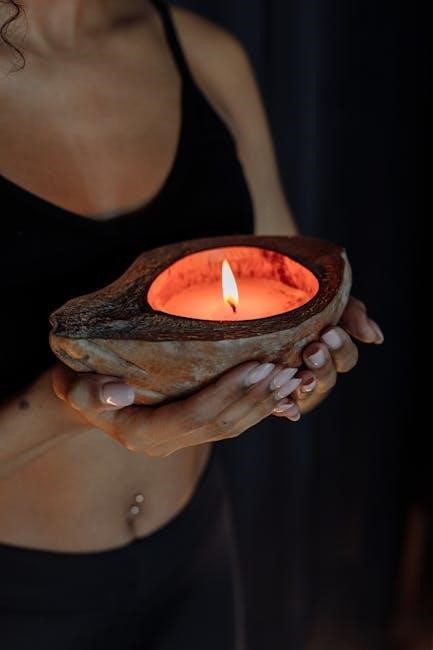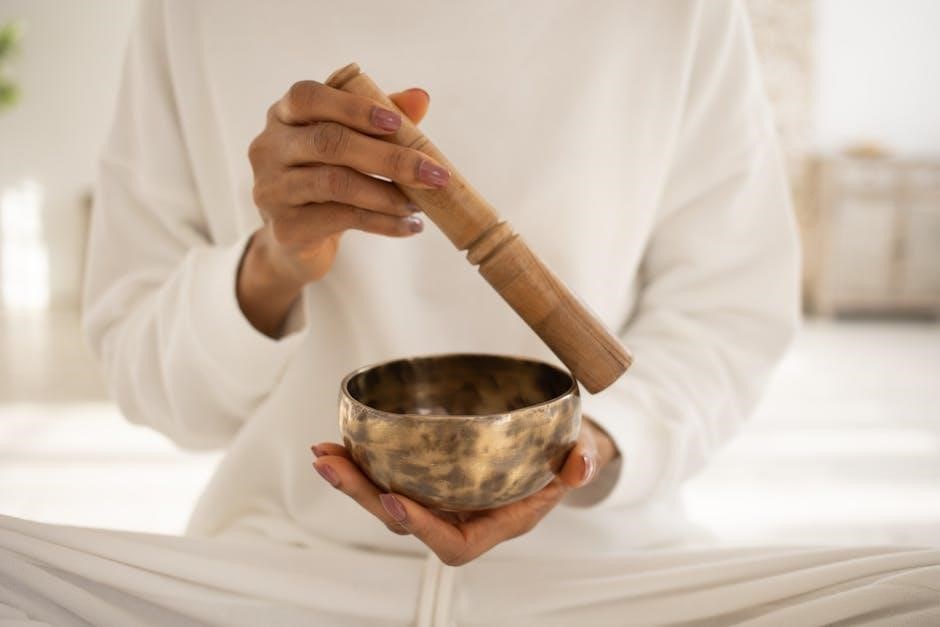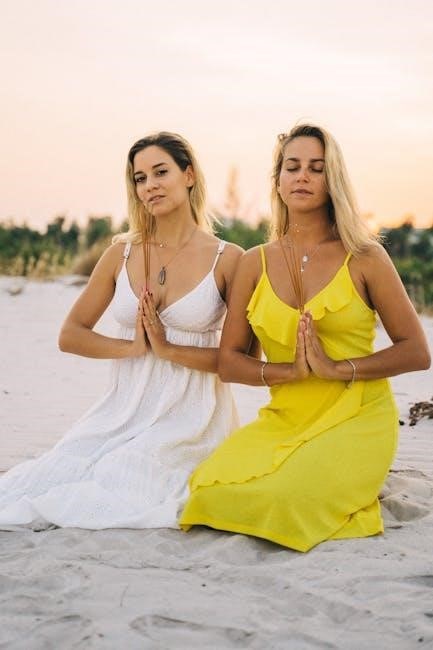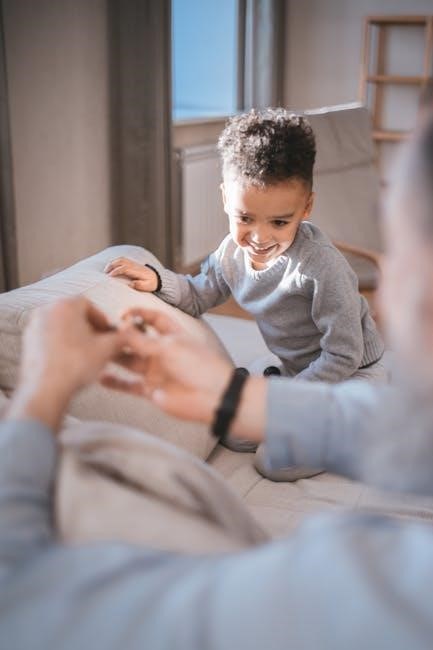Understanding Gentle Yoga
Gentle yoga involves slow, mindful movements, suitable for beginners or those seeking a less intense practice. A 60-minute sequence can improve flexibility, reduce stress, and promote overall well-being. It’s accessible and beneficial for all levels.
Defining Gentle Yoga and its Benefits
Gentle yoga is a practice emphasizing mindful movement and relaxation, ideal for beginners, seniors, or individuals with physical limitations. Unlike more vigorous styles, it focuses on slow, deliberate poses held for shorter durations. A 60-minute gentle yoga sequence can enhance flexibility, improve balance, and reduce stress. Furthermore, it promotes body awareness, eases chronic pain, and cultivates a deeper connection between mind and body. Regular practice can improve mood, boost energy, and increase self-compassion. Therefore, gentle yoga offers a path to physical and mental resilience for diverse populations.

Components of a 60-Minute Gentle Yoga Sequence
Warm-up (7-10 minutes)
A typical 60-minute gentle yoga sequence includes a warm-up, standing poses, backbends, and a wind-down leading to Savasana; Each component is designed to progressively prepare the body and mind for deeper relaxation.
Warm-up (7-10 minutes)
The warm-up phase of a 60-minute gentle yoga class is crucial for preparing the body and mind. Allocate about 7 to 10 minutes for gentle movements. This section eases students into the practice, laying the foundation for deeper poses. It enhances blood flow, increases flexibility, and improves joint mobility. Incorporate slow, mindful movements like neck rolls, shoulder stretches, and gentle spinal twists. Focus on breath awareness to calm the nervous system. This initial stage should gradually prepare muscles for more intense stretches. Avoid rushing, and encourage students to listen to their bodies. The warm-up sets a positive tone for the entire sequence.
Standing Poses: Open to Closed Hip Sequence
In a 60-minute gentle yoga sequence, the standing poses form the core of the practice, building strength and stability. Sequence these poses from open hip variations to closed hip variations for a gradual increase in intensity. Begin with accessible poses like Warrior Two, Triangle Pose, and Extended Side Angle. These open hip postures promote flexibility and balance. Progress towards closed hip poses like Warrior One, Warrior Three, and Revolved Triangle, which require more strength and focus. Maintain a smooth flow between poses, encouraging students to connect with their breath. This systematic approach enhances stability, improves alignment, and cultivates a mindful practice. Proper alignment is key.
Backbends for Heart Opening
Incorporating backbends into a 60-minute gentle yoga sequence is crucial for counteracting the effects of prolonged sitting and stress. These poses gently open the chest and shoulders, promoting better posture and increased lung capacity. Begin with beginner-friendly options like Cobra Pose or gentle supported backbends over a bolster. Focus on maintaining a gentle curve in the spine, avoiding any forceful movements. As students progress, introduce poses like Bridge Pose or Locust Pose, ensuring proper alignment and breath control. Backbends not only improve physical flexibility but also foster a sense of emotional openness and expansion. Emphasize mindful engagement and gentle activation for safe practice.
Wind-Down and Savasana
The wind-down phase is essential in a 60-minute gentle yoga sequence. This transition prepares the body for Savasana, the final resting pose. Include gentle twists like Reclined Spinal Twist to release tension. Forward folds, such as Seated Forward Bend, calm the nervous system. Incorporate restorative poses like Legs-Up-the-Wall Pose to promote relaxation. Guide students to focus on their breath, releasing any remaining tension. Savasana, the peak of the class, allows the body to integrate the benefits of the practice. Encourage students to surrender to stillness, allowing their bodies and minds to fully rest and rejuvenate. This ensures a complete and balanced yoga experience.
Creating Your Own Printable Sequence
Crafting a printable gentle yoga sequence allows customization. Use mini-flows as building blocks for a personalized practice. These short sequences offer variety and can be easily adapted to suit individual needs and preferences.
Using Mini-Flows for Inspiration
When designing your own printable 60-minute gentle yoga sequence, consider using mini-flows as inspiration. These are short, themed sequences of poses that can be strung together to create a longer practice. Yoga Humans creates and explains 10 pose mini-flows that you can use in your yoga class or home practice. These printable sequences explore styles from hatha and vinyasa flow to gentle yin. This approach allows for a more dynamic and engaging experience, preventing monotony. For example, one mini-flow could focus on hip openers, while another emphasizes spinal twists. You can also try other creative yoga sequences. By incorporating several distinct mini-flows, you can target different areas of the body and cultivate a well-rounded practice. Remember to include poses for all levels!
Incorporating Pose Modifications
When creating a printable 60-minute gentle yoga sequence, it’s crucial to include pose modifications to accommodate varying levels of flexibility and experience. Offer options for each pose that allow students to deepen or lessen the intensity as needed. This ensures that the sequence is accessible and inclusive for everyone. For example, in downward-facing dog, suggest bending the knees or using a block under the hands to reduce strain. In seated forward folds, offer the option to keep the knees bent or use a strap around the feet. Providing clear and concise instructions for these modifications in your PDF will empower students to personalize their practice and prevent injuries. Also, show some backbends for heart opening.
Benefits of a Consistent Yoga Template
A consistent yoga template provides students with a familiar structure, fostering comfort and predictability. This familiarity builds trust and encourages repeat attendance, ultimately leading to increased student loyalty and a stronger yoga community.
Building Student Loyalty
Offering a structured and predictable gentle yoga class through a consistent template builds trust with students. When students know what to expect, they feel more comfortable and confident in your guidance. This comfort leads to increased engagement and a deeper connection to the practice. A well-designed template allows students to track their progress, fostering a sense of accomplishment and encouraging them to return regularly. By providing a reliable and supportive environment, you cultivate a loyal student base who appreciate your expertise and dedication. Consistency also makes it easier for students to integrate yoga into their weekly routines, further solidifying their commitment.

Finding Printable 60-Minute Gentle Yoga Sequences
Discover curated collections of printable 60-minute gentle yoga sequences online, offering detailed instructions and modifications. These resources cater to beginners and experienced practitioners, enhancing your practice and providing guidance for mindful movement.
Curated Collections and Resources
Finding reliable printable 60-minute gentle yoga sequences can be simplified by exploring curated online collections. These resources often feature sequences designed by experienced yoga teachers, ensuring safety and effectiveness. Look for collections that offer a variety of sequences catering to different needs and levels, from beginner-friendly flows to sequences focused on specific benefits like stress reduction or improved flexibility.
Many yoga websites and blogs provide downloadable PDFs with detailed instructions, pose modifications, and helpful illustrations. These resources often include tips on breathing techniques and alignment, enhancing your understanding and practice. Additionally, consider exploring yoga apps or online platforms that offer a library of sequences that you can easily print or access on your device.

Sequencing Tips for Yoga Teachers
When sequencing, consider building towards a “peak pose.” This provides focus and allows students to work progressively. Choose poses appropriate for the class level and offer modifications for accessibility.
Teaching to a Peak Pose
Incorporating a peak pose into your 60-minute gentle yoga sequence provides a focal point, helping students work towards a specific goal. The chosen peak pose should be appropriate for the class’s skill level, offering modifications to accommodate varying abilities. Selecting a peak pose adds structure and intention to the flow, guiding pose selection and creating a cohesive experience.
Consider the students’ needs and comfort levels when choosing the pose, ensuring they feel challenged yet supported. This approach enhances engagement and fosters a sense of accomplishment as students progress toward a tangible objective within the practice.

Resources for Yoga Teachers
Yoga sequencing books offer inspiration for designing effective and safe gentle yoga classes. These resources provide pose ideas, alignment cues, and sample sequences that can be adapted for various student needs and class durations.
Yoga Sequencing Books
Yoga teachers can find inspiration and guidance in yoga sequencing books. These books offer pose ideas, alignment cues, and sample sequences tailored for various levels, including gentle yoga. They provide insight into structuring a class, considering transitions, and achieving a specific focus or peak pose. Some books delve into the energetic effects of poses and how to create a balanced flow. Teachers can use these resources to enhance their understanding of anatomy, modifications, and contraindications.
Furthermore, these books can aid in developing themed classes, incorporating philosophy, and crafting a unique teaching style. By studying diverse sequencing approaches, teachers can build confidence and creativity in designing their own 60-minute gentle yoga sequences.